The Inside Story of Caddyshack II, One of the Worst Sequels in History
Forty years ago, on July 25, 1980, a small-budget snobs-versus-slobs summer comedy about the underpaid caddies and overprivileged members of a lily-white country club called Bushwood opened in theaters across the U.S. It was hardly a Cinderella story upon its release. The critics were brutal, and the film struggled to find success at the box office. At least at first. Over the years, Caddyshack would go on to become nothing short of a pop culture phenomenon. It was a film distinctly of its time, yet it ended up building its audience after that time had passed. It’s also the rare mainstream movie that feels like a cult classic to its fans, who can quote its lines like scripture.
But this is not about how that movie became one of the most improbable hits in Hollywood history.
Rather, this is about how a beloved film and an all-time great sports comedy led to another summer movie eight years later. Only this one is less fondly remembered. In fact, it’s so painful and atrocious that it may be the worst sequel ever made. Caddyshack II was a project plagued by inertia, indecision and impulsiveness. There were unhappy stars, oversize egos and even legal battles. So pop open a Fresca, grab a seat by the pool—or the pond, as Ty Webb would suggest—and learn how a once-in-a-generation cinematic catastrophe jackknifed off the rails.
***
Caddyshack had been Harold Ramis’s debut film as a director. And it shows. As funny as the film was (and remains to this day), there’s no getting around that technically it’s a mess. The plot is thin, one scene has very little to do with the next and then there’s the animatronic gopher, a cloying, hip-wiggling mascot tasked with tying the whole thing together. But the movie is perfect despite—or perhaps because of—those imperfections. Of course, having a cast that included Bill Murray, Chevy Chase, Rodney Dangerfield and Ted Knight and a director who just let them loose didn’t hurt either. Ramis would later admit that he had no clue what he was doing on Caddyshack, referring to it as his learn-on-the-job “$6 million scholarship to film school.”
So, in a way, Ramis was more surprised than anyone when he received more offers to direct after the film began to find an audience in the year or so after its debut. He went on to direct 1983’s National Lampoon’s Vacation and write and star in both 1981’s Stripes and 1984’s Ghostbusters. Meanwhile, the tight friendship that Ramis had formed with Dangerfield during the making of Caddyshack, where he patiently soothed the comic’s laundry list of anxieties, led to another assignment: writing the screenplay for Dangerfield’s biggest box-office hit, 1986’s Back to School. At 65, Dangerfield was undeniably Hollywood’s newest (and most unlikely) A-list star. Every studio in town was hot for his next film. At the top of that list was Warner Bros., which had distributed Caddyshack, Dangerfield’s first major movie. Now it wanted Rodney and his boorish, nouveau-riche loudmouth character Al Czervik to come back for a sequel. After the original ranked as one of 1980’s top-grossing comedies with nearly $40 million in earnings, the studio was so confident of the commercial potential of Caddyshack II that before it had hired a director or signed up the cast or had even a rudimentary outline of the script, it had a tagline for the movie’s poster: the shack is back! The studio execs had made the mistake of thinking that they and Rodney shared an unspoken bond of loyalty. But after a lifetime of grinding on the glitz-free comedy-club circuit, Dangerfield had a full grasp of his new place in the Hollywood food chain. He had made $35,000 for the original film. Now, he was asking for $7 million ($5 million of which was to be paid in advance) to return to Bushwood. He also wanted a personal sauna built on the set.
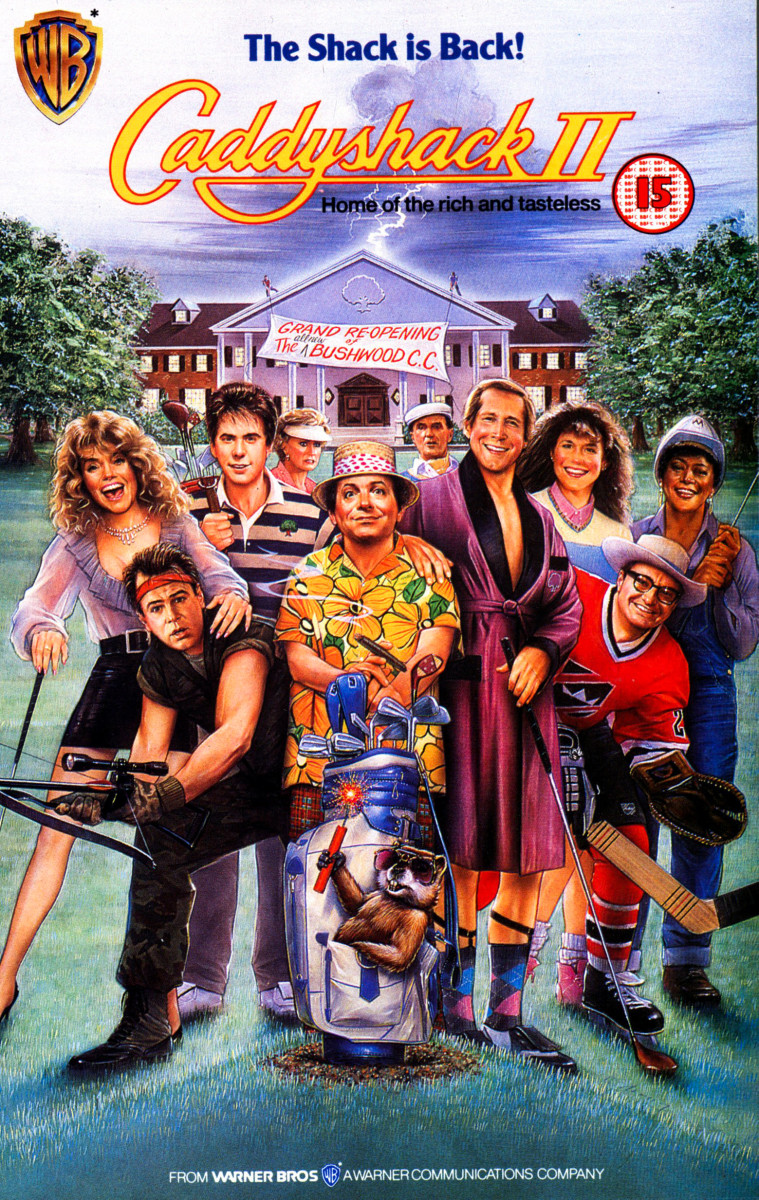
Warner Bros. agreed to his demands. The studio needed a big comedy for the summer of ’88, and its cupboard was bare. In the meantime, it had made an equally pricey deal with Chase for a glorified cameo as Webb, the Zenned-out playboy golfer; he has only five minutes of screen time in Caddyshack II. As for Murray, he wasn’t interested in playing the unhinged assistant greenskeeper Carl Spackler a second time, especially when he heard that the sequel would be rated PG instead of the original’s R. Knight had died in 1986, at 62, from colon cancer.
Eager to reassemble whatever talent it could from the diminishing pool of the original Caddyshack, the studio next asked Ramis whether he wanted to write the screenplay. He didn’t. But he found it hard to refuse the desperate entreaties of his old pal Dangerfield, who said that he would work with him on the sequel’s script. Against his better judgment, Ramis gave in. “Rodney said, ‘Come on, it will be great,’ ” Ramis told me in 2010. (He died from autoimmune inflammatory vasculitis four years later, at 69.) “Then they hit me with the irresistible logic that if I didn’t do it, someone else will.”
While Ramis worked on a first draft in the summer of 1987 with his old SCTV writing partner PJ Torokvei (who died in ’13), a director had been hired: Back to School’s Alan Metter. Even with that surge of momentum, Ramis told me that his heart just wasn’t in the Caddyshack II script. “We got it as good as we could get it,” he said. But Dangerfield, who knew that he would be carrying the sequel as opposed to being part of an ensemble, didn’t like what he read. (He died in 2004 at 82 from complications following heart surgery.) Despite his fat payday, the comic was growing more and more disenchanted. He asked for rewrites, but didn’t like those either. He started eyeing the exit.
In October 1987, less than a month before filming was scheduled to begin, Dangerfield dropped out of the project. In the lead-up to his bailout he did everything he could to force Warner Bros. to let him out of his contract. He reportedly demanded additional royalties and final-cut rights. With more than $2 million already spent on pre-production, Warner Bros. sued him for breach of contract and asked for punitive damages totaling $10 million. Once Dangerfield left, the studio ousted Metter. Filming was put on hold indefinitely.
“When Rodney pulled out, I said, ‘I’m done.’ I’d only been doing it because Rodney asked me to,” recalled Ramis. “And then they said, ‘Come on, we’ll go see Jackie Mason.’ And I said, ‘Nah, you go see Jackie Mason. I don’t think I want to be involved in that.’ And at some point, I tried to take my name off, and the studio begged me not to. They said, ‘If you take your name off, it will be big news in Hollywood and it will kill our first weekend.’ So I left my name on.”
***
Allan Arkush is 72. His directing career first took off with the 1979 low-budget cult hit Rock ‘n’ Roll High School, and he would later go on to direct more than 200 episodes of television, earning four Emmy nominations. But amid those accomplishments lies an entry on his résumé that he’s less proud of. In fact, he’s been trying to make peace with it for the past 32 years. When I reached out to Arkush to discuss his experience directing Caddyshack II, he likened talking about it to “pulling off a bandage off very fast” and admitted that making the film had sent him into therapy. “I should have never made this movie!” he said. “What was I thinking?”
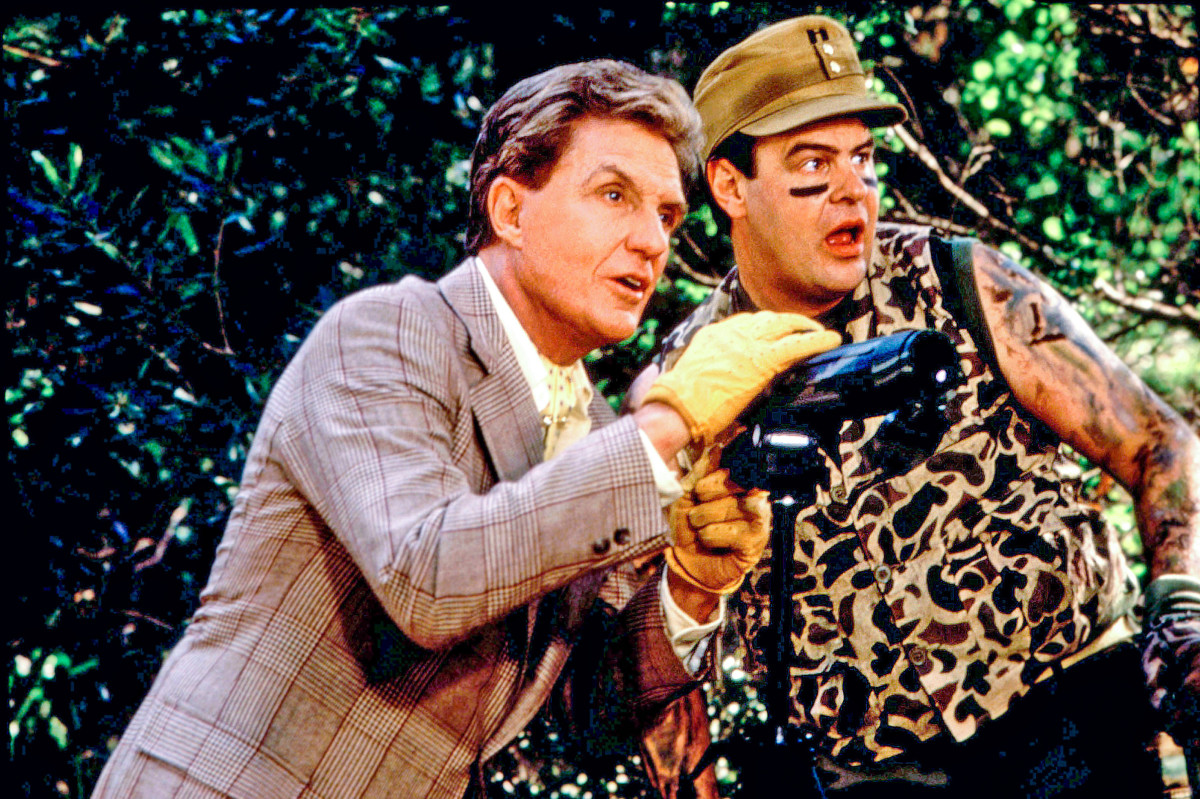
When Arkush replaced Metter during the waning days of 1987, he was completely in the dark about Dangerfield’s lawsuit with the studio. (Warner Bros. later settled for an undisclosed amount.) All he knew was that he had been happily directing the hit TV show Moonlighting and wanted to take another shot at helming a feature film. Then, out of the blue, Warner Bros. called him with Caddyshack II. When he hung up the phone, he went to Blockbuster, rented the original Caddyshack and phoned back to say he was in. But soon alarm bells were ringing in his head: “The more I got into it, the more I realized that they didn’t have a script that was in any kind of shape, they didn’t have Bill Murray and now they didn’t have Rodney Dangerfield.”
Arkush was also shocked to learn that the studio still planned a summer release. Looking back, he compares the assignment to hopping onto a moving ship (think Titanic) barreling full steam ahead. He was told that Chase was still in because he was being paid a lot for minimal work. There was talk of hiring Dan Aykroyd for the Murray role. And then the studio mentioned who it had in mind to replace Dangerfield. “Jackie Mason had a hit one-man show on Broadway,” Arkush recalls. “So five days after I signed up, I’m on the Warner’s jet with [studio head] Jon Peters to see Jackie in New York.”
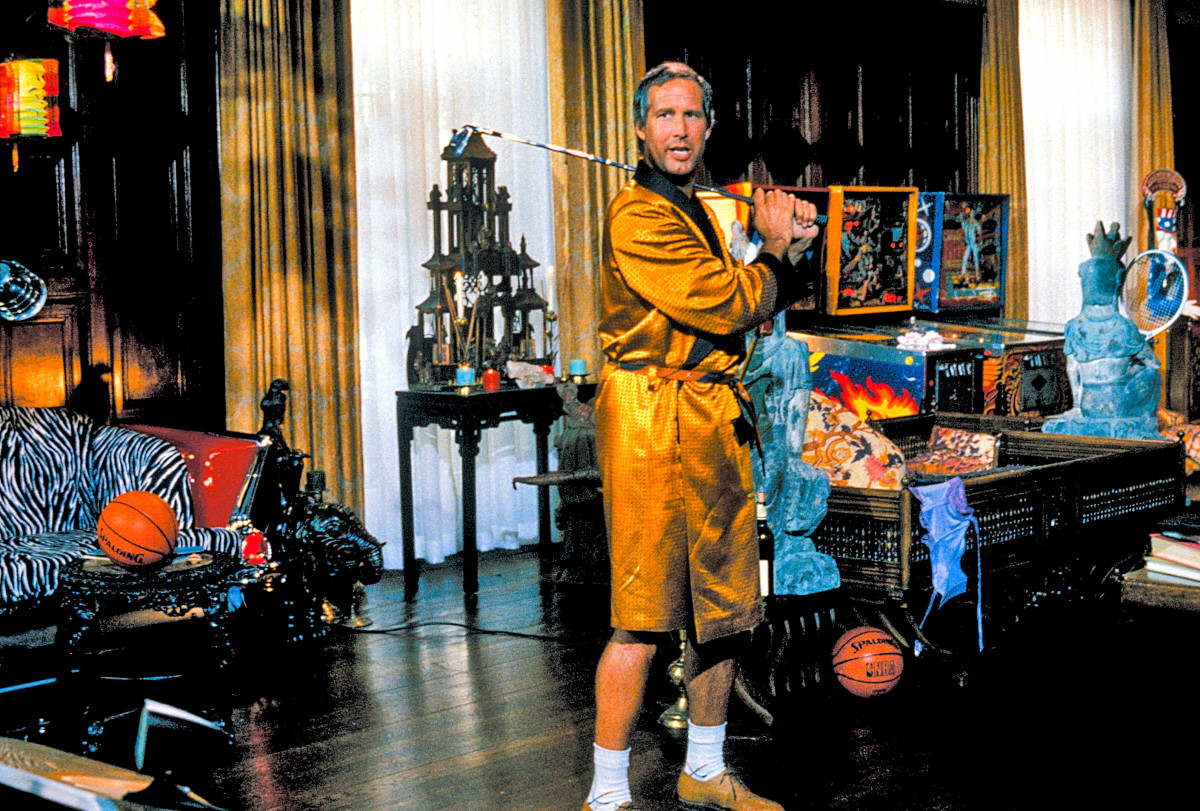
After catching Mason’s show, they went out to dinner with the old-school comic whose Borscht Belt shtick didn’t seem to come with an off button. But Arkush didn’t become uneasy until the next day when he went back to see Mason’s show again. “I started to get a very different impression of him,” says Arkush. “The thing that occurred to me was that he didn’t connect with the audience in any sort of personal way. That’s not necessarily a good thing for someone who’s supposed to be your lead. At least when Rodney says, ‘I get no respect,’ there’s an empathy that he evokes from the audience.” Arkush brought his concerns to Peters, who shot him a look and replied, “Don’t turn a go picture into a development deal.” End of conversation.
While a new writing team—Who Framed Roger Rabbit’s Jeffrey Price and Peter Seaman—came in to overhaul the script, the studio began to round out the cast with smudgy (and less funny) copies of the character archetypes from the original film. Mason was basically the new Dangerfield; Aykroyd eventually signed on to play a thinly veiled version of the Spackler doofus; Robert Stack took on the snob character, à la Knight; future Weekend at Bernie’s star Jonathan Silverman filled the main caddie role, previously played by Michael O’Keefe; and Randy Quaid entered as Mason’s hair-trigger psycho lawyer—a character that Dangerfield had conceived for his friend and fellow standup Sam Kinison. Before the cameras even rolled, it all seemed watered down and flat.
***
On Jan. 18, 1988, the Caddyshack II cast and crew descended on Rolling Hills Golf Club in Davie, Fla.—the same location used for the original. Right away, nothing felt right. Not only was Mason’s golf swing an abomination even after working on the set with a pro, but he also couldn’t remember his lines and was gorging himself at the craft services table—so much so that the wardrobe department had to keep letting out his pants. Aykroyd decided that his gonzo military character should speak in an odd, high-pitched whinny (which, he later claimed, was based on the voice of Iran-Contra figure Oliver North, and which the producers absolutely hated). Mason and his onscreen love interest, Dyan Cannon, had zero chemistry and couldn’t be bothered to hide it. And as for Chevy Chase . . . well, he was Chevy Chase.
Although his Ty Webb character was the only direct link to the original Caddyshack, the actor arrived in Florida seemingly more interested in collecting his seven-figure salary than delivering anything resembling a performance. “It was a big paycheck, which Chevy talked about a lot,” says Arkush. (I asked to interview Chase through his publicist and did not receive a reply.) “I went into this thinking that Chevy was committed to this character, but he wasn’t. On his first day, we were working out the blocking for his scene and I said, ‘How do you want to do this, Chevy?’ And he was just pissed at me and said, ‘Why? Don’t you have any ideas?!’ ”Arkush says he was being deferential since Chase was the actor who had created Webb and might want to have some input. But he was wrong. Cut to two days later, and once again Arkush found himself blocking Chevy’s scene. Having learned his lesson from their previous clash, Arkush offered his suggestions. To which Chase snapped, “What? Don’t I get any input on this?!” The director couldn’t win. Later, while watching one of his scenes during postproduction, Chase coldly quipped to Arkush, “Call me when you’ve dubbed the laugh track,” before walking off in disgust.
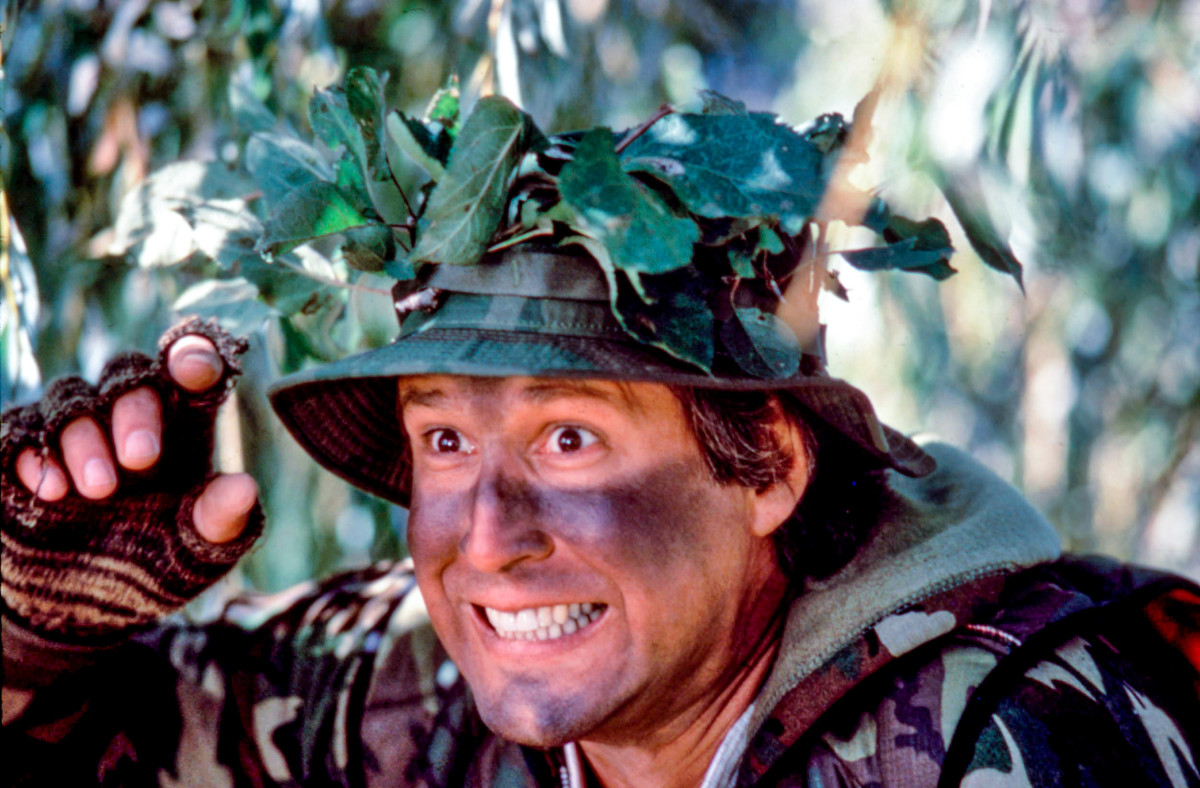
It’s impossible to list all of the reasons why Caddyshack II doesn’t work. Arkush believes the chief culprit is that the film ended up as “The Jackie Mason Show,” which he says was a mistake. But it certainly doesn’t help that none of the other characters are remotely interesting either. The jokes are groaners (especially Aykroyd’s “suck out the poison” routine), and the original’s love of golf is nowhere to be found: Bushwood has been turned into a mini-golf eyesore that doesn’t even have a caddie shack. The movie’s idea of comedy is loading the soundtrack with horse fart sound effects and adding more gopher, who, in case you’ve had the good fortune not to see it, actually speaks. (It’s even more embarrassing than it sounds.) There’s nothing that comes close to the giddy genius of Murray’s improvised Dalai Lama and Cinderella story monologues; Chase’s Zen “be the ball” mantra; Dangerfield’s eye-rolling, “It looks good on you, though”; or Knight’s slow-burn outburst, “Well, we’re waiting!” It makes Major League II look like The Godfather II.
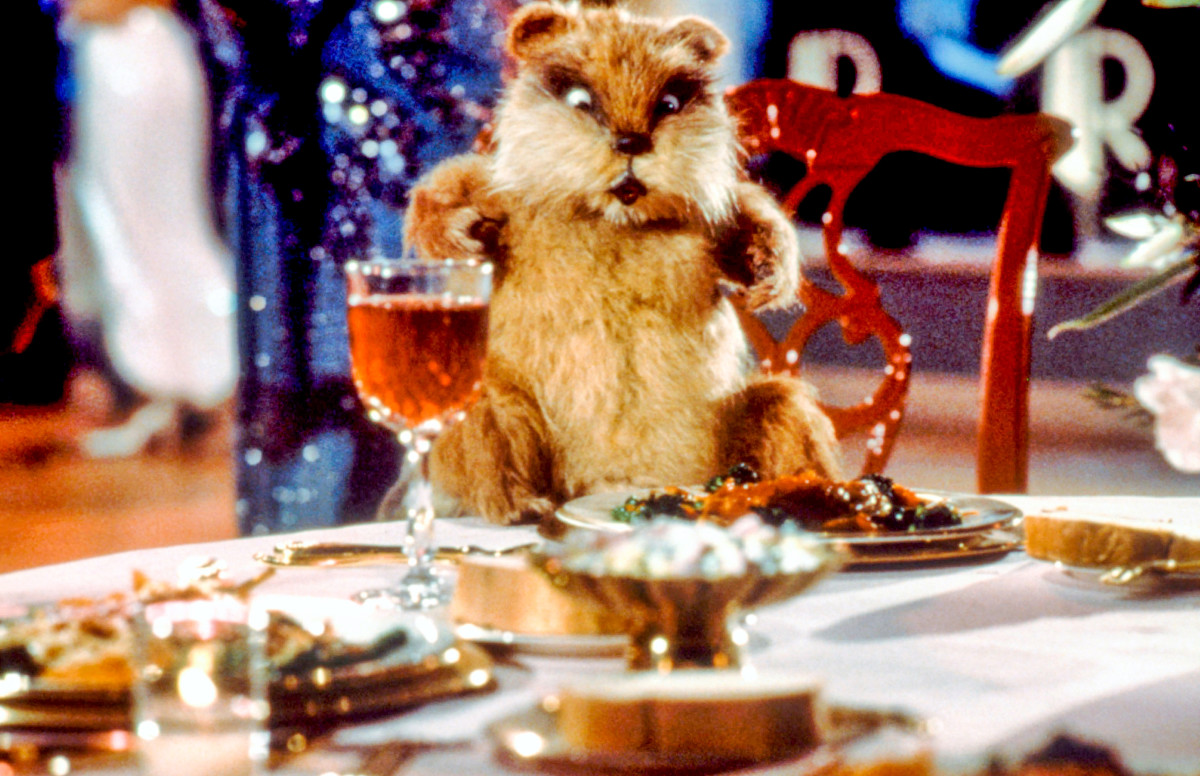
Arkush, the producers and the suits at Warner Bros. knew all of this before the release. “Torokvei and I went to one of the first research screenings in Pasadena,” recalled Ramis, “and we literally crawled out of the theater because we didn’t want anyone to see us.” Added Mark Canton, then the studio’s head of production, in 2010, “It was troubled from the beginning because Rodney didn’t do it. No offense to Jackie Mason, but it just didn’t work. It was well-intentioned and it was a good business move, but it just wasn’t the same.” Not that Mason didn’t try. At least, in his own fashion. Appearing on Late Night With David Letterman on the eve of the Caddyshack II release, Mason told the host, “I think the movie’s going to be one of the great sensations of all time. I say that for one reason—it didn’t come out yet. Nobody can call me a liar.”
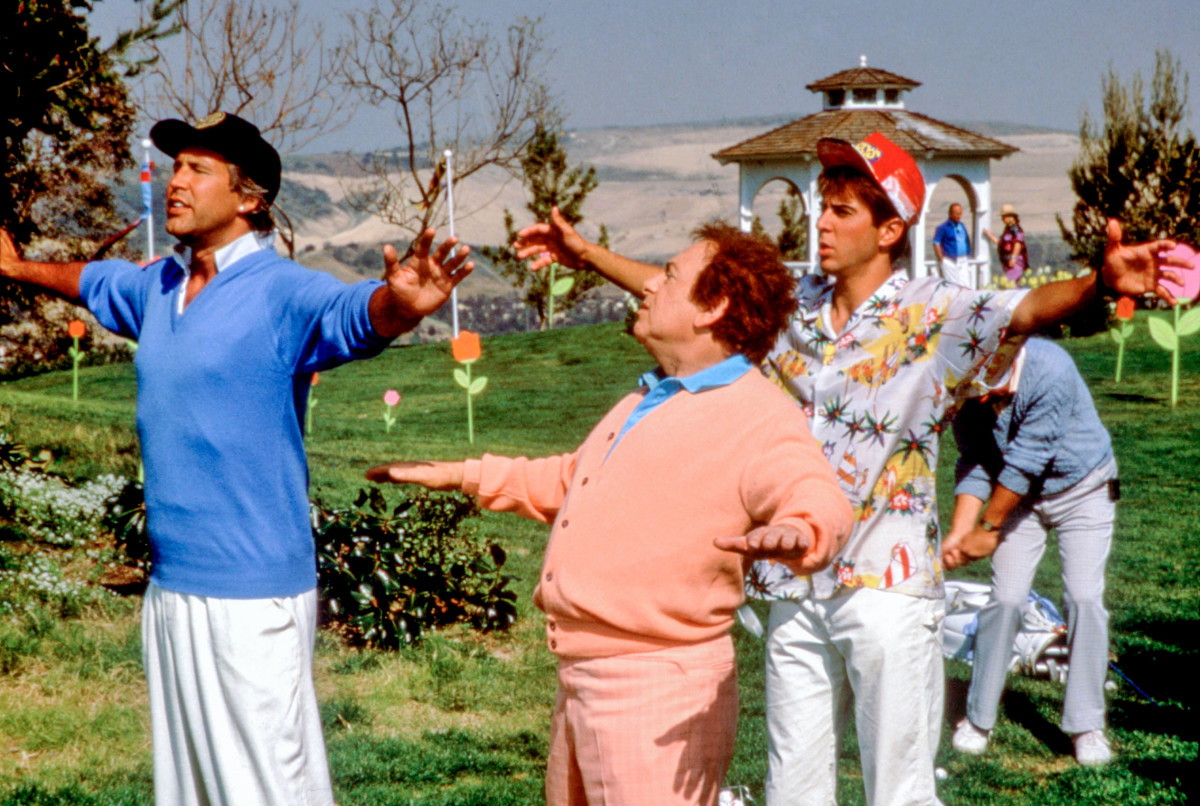
It was hard to feel quite so bullish by the time the film’s opening weekend came and went. Made for $25 million, Caddyshack II opened with a feeble $4.4 million at the box office. (It would eventually eke out $11.7 million.) The critics were merciless. The New York Times review ended: “Caddyshack II is the kind of film that sends careers spiraling downward.” The Chicago Tribune added, “It’s shoddy, lazy and numbingly stupid.” And The Washington Post jumped onto the dogpile, saying, “It’s patronizing and clumsily manipulative, and top banana Jackie Mason is upstaged by the gopher puppet.” Caddyshack II currently sits on Rotten Tomatoes licking its wounds with a 4% fresh rating and a spot on the site’s 50 Worst Summer Movies of All Time list.
By the end of 1988, the film had largely been forgotten, though not by the Golden Raspberries. In the snarky organization’s annual “celebration” of the worst films of the year—a sort of anti-Oscars—it nominated Caddyshack II in four categories, including Worst Picture, Worst Actor (Mason), Worst Original Song (“Jack Fresh” by Full Force) and Worst Supporting Actor (Aykroyd). It won the last two of those categories. Needless to say, no one involved with the film showed up in person to accept their awards.
